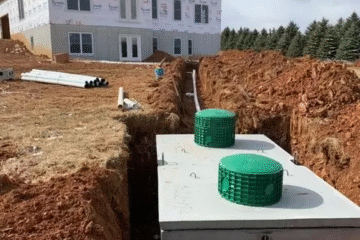Ultimate Guide to Lawn Care for New Homeowners

Ultimate Guide to Lawn Care for New Homeowners
One thing that scares almost every new homeowner with a backyard is how to properly take care of a lawn. It’s not unheard of that people have given up on great properties just because they think that mowing and maintaining the lawn is impossible or expensive.
To keep your lawn green and healthy, you should know a couple of tricks and tips. The truth is that lawn maintenance isn’t as complicated or expensive as you may think.
To help you understand and get the hang of lawn maintenance, here is the ultimate lawn care guide.
1. Mowing
Mostly every new homeowner is primarily concerned with mowing the lawn. How will they know when to mow the lawn, how to mow it, which tools and equipment to use, and similar concerns?
To be honest, lawn mowing is probably the least of your concerns when it comes to maintaining the grass around your home. To mow a lawn you will need a lawn mower, and when you notice that the grass is around 3 inches tall, you can mow it.
Your lawn mower blades should be sharp and ready to go. One thing to keep in mind is to never mow wet grass. Let the lawn dry before mowing it, if you fail to do so, you risk clumps of grass getting stuck to the blades of the mower. Lawn mowing is a regular chore that will become easier the more you do it. So, don’t worry about it.
2. Watering
Now, you may have thought that mowing is more complicated than watering the lawn, but there’s a twist. Watering is not as easy as it may seem. First off, you should keep in mind that both under and overwatering your grass may cause issues with your lawn. So, how to maintain a properly watered lawn without ruining it?
First, you should get a good hose reel. You’ll benefit greatly if you decide to invest in a retractable hose reel. Sleek retractable hose reels will ensure that there is no hose mess and that your hose is properly stored.
Then, you should know exactly when to water your lawn. The best time is in the early mornings, between 6 and 10 a.m. During this time of the day, you can rest assured that moisture will reach the roots of the grass. When watering, you should water less frequently but deeply enough.
Look for spots in the lawn where the grass is either too dry or where the water pools. Make sure you water these places accordingly.
3. Aeration
Aeration can be explained as a process of poking holes in the soil to help air, water, and nutrients reach the roots of your grass. The point of aeration is to help your grass grow stronger, greener, thicker, and thus healthier.
Aeration should be done in the fall so that your lawn is ready for winter. The whole process will allow the water and fertilizer to reach down to the roots instead of evaporating. Aeration is also a great way to reduce insect damage on your lawn.
During winter, insects tend to go deeper into the ground and feast on the roots of your grass. Reaching them with pesticides is the only option and the wholes in the soil make that much easier and more successful.
4. Fertilization
Above we mentioned fertilization, now let’s see why your lawn should be fertilized and how often. The point of lawn fertilization is to make your grass healthier and stronger, and the truth is, every lawn should be fertilized no matter how lush looking it is.
The fertilization treatment should be done regularly but be careful not to overfertilize too much! If you’re going to be fertilizing more frequently, try using products that are low in nitrogen. Don’t apply too much of a fertilizing product either. Always follow the instructions provided on the package of fertilizer.
Overfertilizing your lawn can damage it, so make sure you find a golden middle.
5. Weeding
Grass without weeds is a myth, or is it? Weeds are the archnemesis of your perfect lawn. Just when you think you managed to get rid of them all, the weeds come back. Different types of weeds can make your life impossible and your lawn less than perfect.
The best way to deal with weeds is by properly maintaining your lawn. This includes all the above-mentioned tips – mowing the lawn, aerating, watering, and fertilizing it regularly. In addition to all that, you can use herbicides for more stubborn types of weeds.
Oh, and the good-old, hand-pulling method also works like a charm. Of course, if the weeds are deeply rooted you can use tools such as a hand weeder, trowel, weeding fork, garden knife, or hoe, to name a few.
6. Seeding
There are cases where areas in your lawn are damaged and there’s nothing you can do to revive the grass there. In those situations, your best option is to reseed the grass in those spots.
When sowing grass, good timing is everything. Usually, the best time to put grass seed into the soil is in the early fall when the soil is still warm. This means anything from late August, September, October, to November is acceptable because the soil temperature will encourage root growth and the air temperature will prevent excessive growth.
We recommend you do some research before you buy just any type of grass seed. There are many types on the market, so choosing the right type for your area and your current grass can be beneficial.
The next steps include preparing the soil, seeding, feeding, and finally covering up the seeds. Properly watering the area after seeding grass is highly important, so continue to do so.
And there you have it – a guide to lawn care. You were probably expecting something more extensive and complicated. When it comes to taking care of a lawn, it’s all about timing and not overdoing things. Mow your lawn regularly, water it moderately and deeply, aerate and fertilize when necessary and that’s it!




